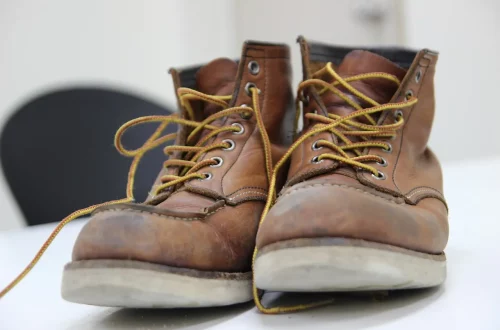
The Ultimate Guide to the Best Harness for Little Dogs
When it comes to choosing the right harness for your little dog, several factors come into play. Small dogs have unique needs that differ significantly from larger breeds. Their delicate frames require a harness that provides both comfort and security, allowing them to explore their surroundings without compromising their safety. The right harness can also help control pulling tendencies, making walks more enjoyable for both the dog and its owner.
In today’s market, pet owners are presented with a myriad of options, ranging from traditional harnesses to more innovative designs. Understanding the different types of harnesses available, as well as the benefits of using one, can help you make an informed decision. Furthermore, the fit and style of the harness can affect your dog’s comfort level while wearing it. This is particularly important for smaller breeds, as a poorly fitted harness can cause chafing and discomfort.
Choosing the best harness for your little dog not only enhances their walking experience but also contributes to their health and well-being. With the right information, you can find a harness that perfectly suits your pup’s personality and physicality.
Understanding Different Types of Harnesses
When selecting a harness for your small dog, it’s essential to understand the various types available on the market. Each design serves different purposes and offers unique features that cater to specific needs.
One of the most common types is the standard harness, which typically wraps around the dog’s body and clips at the back. This design is straightforward, providing a secure fit without putting pressure on the neck. Standard harnesses are suitable for everyday walks and are often made from durable materials that withstand wear and tear.
Another popular option is the no-pull harness, designed specifically for dogs that tend to pull on the leash. This type of harness features a front clip that helps redirect the dog’s attention back towards the owner, making walks more manageable. No-pull harnesses often come with padded straps for added comfort, essential for smaller breeds that may be more sensitive to pressure.
For those looking for versatility, a step-in harness could be the ideal choice. This design allows dogs to step into the harness rather than having it pulled over their heads. Step-in harnesses can be easier for both the dog and owner, especially for anxious pups or those who dislike having things placed over their heads. They often come with adjustable straps for a customizable fit, ensuring maximum comfort.
Lastly, there are specialized harnesses, such as those designed for car travel or service animals. These harnesses often include additional safety features, such as seatbelt attachments or reflective materials for visibility during night walks. When selecting a harness, consider your dog’s lifestyle and the specific activities you plan to engage in together.
Remember, the right harness can make a significant difference in your small dog’s walking experience, contributing to the overall enjoyment of your outings together.
Key Features to Look For
Choosing the best harness for your little dog involves more than just picking a cute design. Several key features should be considered to ensure both comfort and safety.
First and foremost, adjustability is crucial. A harness that can be adjusted at multiple points will provide a better fit, accommodating your dog’s unique body shape. Look for harnesses with adjustable straps around the chest and neck to prevent any slipping or chafing. A snug fit will not only enhance comfort but also ensure that the harness functions as intended.
Material is another important consideration. Opt for breathable fabrics that allow air circulation, especially if you live in a warmer climate. Soft, padded materials can prevent rubbing and irritation, making walks enjoyable for your pet. Furthermore, look for harnesses that are machine washable; this will make caring for the harness easier and keep it clean and hygienic.
Another feature to consider is the harness’s weight. Lightweight designs are ideal for smaller breeds, as heavy harnesses can feel cumbersome and restrictive. Ensure that the harness you choose doesn’t add unnecessary weight to your dog’s frame.
Reflective strips or bright colors can also enhance safety, especially for evening walks. Visibility is crucial in low-light conditions, as it helps you keep an eye on your dog while making them noticeable to drivers.
Lastly, consider the ease of use. A harness that is simple to put on and take off will make your daily routine smoother. Look for designs that do not require complicated maneuvers, as this can be frustrating for both you and your dog.
By focusing on these key features, you can find a harness that not only looks great but also meets the practical needs of your little companion.
How to Properly Fit a Harness
Fitting a harness correctly is vital for your little dog’s comfort and safety. An ill-fitting harness can lead to discomfort, chafing, or even injury. Here’s a step-by-step guide to ensure that your dog’s harness fits perfectly.
Start by measuring your dog’s girth, which is the widest part of their chest. Use a soft measuring tape, wrapping it around your dog’s body just behind the front legs. Make sure the tape is snug but not tight, as you want to get an accurate measurement. This measurement will help you select the appropriate size according to the manufacturer’s sizing chart.
Once you have the harness, it’s time to put it on your dog. Lay the harness flat on the ground and have your dog step into it. If you’re using a step-in harness, ensure that their front legs go through the correct openings. For traditional harnesses, carefully place it over their head while keeping the straps in the right position.
After putting the harness on, adjust the straps to ensure a snug fit. You should be able to slide two fingers comfortably between the harness and your dog’s body. If you can fit more than two fingers, the harness is too loose. Conversely, if you struggle to fit even one finger, it may be too tight.
Once adjusted, allow your dog to wear the harness for a few minutes indoors to see how they react. Watch for any signs of discomfort or resistance. If they seem uneasy, readjust the harness or try a different design.
Remember, a properly fitted harness will not only keep your dog secure but also allow them the freedom to move comfortably. Regularly check the fit, especially if your dog is still growing or if you notice any changes in their weight or body shape.
Top Recommendations for Little Dog Harnesses
With so many options available, it can be challenging to choose the best harness for your little dog. Here are some top recommendations based on comfort, safety, and overall functionality.
Firstly, the **PetSafe Easy Walk Harness** is a popular choice among dog owners. This no-pull harness is designed to gently discourage pulling while allowing for easy adjustments. Its unique design features a front clip that helps redirect your dog’s attention, making walks more manageable. The padded straps ensure comfort, and the breathable material is perfect for warmer days.
Another excellent option is the **Puppia Soft Dog Harness**, known for its soft, padded design that provides maximum comfort. This step-in harness is particularly user-friendly and comes in various colors and sizes to fit different breeds. The breathable mesh fabric ensures that your dog stays cool while wearing it, making it ideal for everyday use.
For those who prioritize safety during car travel, the **Kurgo Tru-Fit Smart Dog Harness** is a standout choice. This harness doubles as a walking harness and a car safety seatbelt, making it versatile for pet owners on the go. It features a padded chest plate for comfort and comes with a tether that attaches to your car’s seatbelt system, ensuring your dog remains secure during travel.
Lastly, the **Ruffwear Front Range Harness** offers durability and comfort for adventurous little dogs. This harness is designed for active dogs who love hiking and outdoor activities. It features two leash attachment points, one on the back for relaxed walks and one on the chest for more control during hikes. The padded straps and breathable materials make it a favorite among outdoor enthusiasts.
With these recommendations, you can find a harness that meets your little dog’s unique needs and enhances your walking experience together.
In conclusion, selecting the right harness for your little dog is essential for their comfort, safety, and overall enjoyment during walks. By understanding the different types of harnesses, key features, proper fitting techniques, and top recommendations, you can make an informed choice.
Always remember that your dog’s needs may change, so it’s essential to regularly assess their harness for fit and comfort. A well-fitted harness can make all the difference in creating a positive walking experience for both you and your furry friend.
*Disclaimer: This article is for informational purposes only and does not constitute medical advice. If you have health concerns regarding your dog, please consult a veterinarian.*




